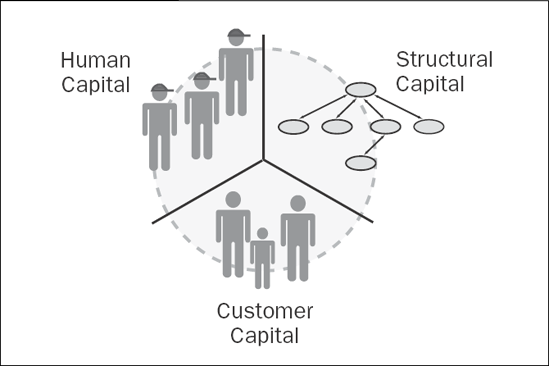1.2. Intellectual Capital
In traditional management of early twentieth century that dealt with the optimum utilization of labor, parts, and other physical resources, capital was considered limited to the factories, machines, and other human-made inputs into the production process. In the modern corporation with a KM initiative, the concept of capital is extended to include ephemeral intellectual capital and its impact on individual and organizational behavior. Although intellectual capital can be lumped into one concept, from a KM perspective, it's more useful to consider the constituent components individually, as shown in Exhibit 1.4.
EXHIBIT 1.4. EXHIBIT 1.4

The three major components of intellectual capital are:
Human capital. The knowledge, skills, and competencies of the people in the organization. Human capital is owned by the employees and managers that possess it. Without a KM system in place, when employees and managers leave the company, they take their skills, competencies, and knowledge with them.
Customer capital. The value of the organization's relationships with its customers, including customer loyalty, distribution channels, brands, licensing, and franchises. Because customers often form bonds with a salesperson or customer representative, customer capital typically is jointly owned by employee and employer. The proportion of customer capital held by employees ...
Get Essentials of Knowledge Management now with the O’Reilly learning platform.
O’Reilly members experience books, live events, courses curated by job role, and more from O’Reilly and nearly 200 top publishers.

